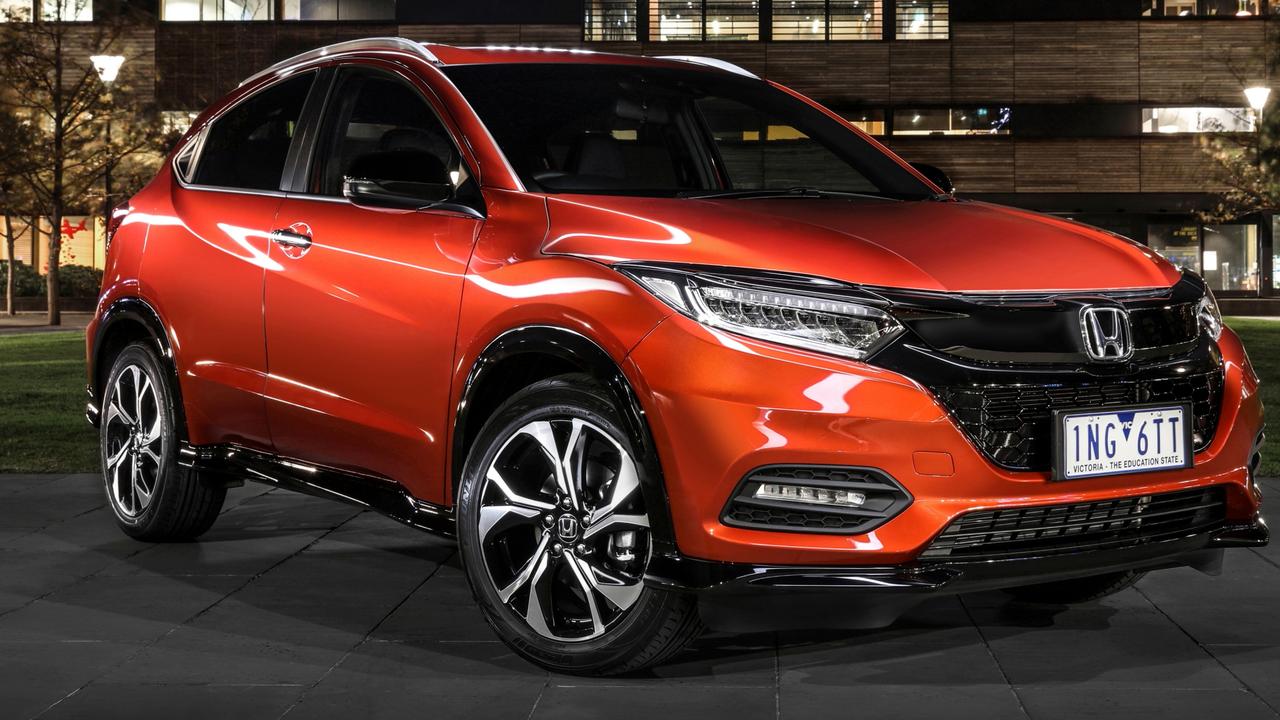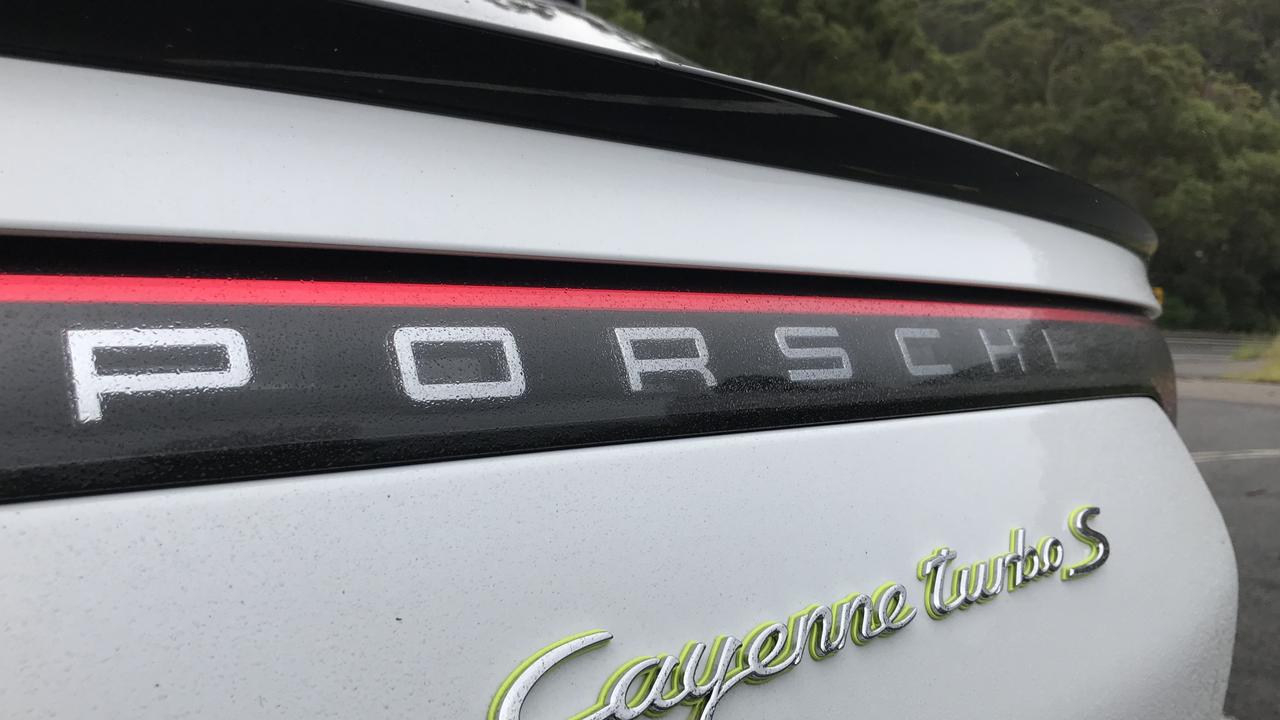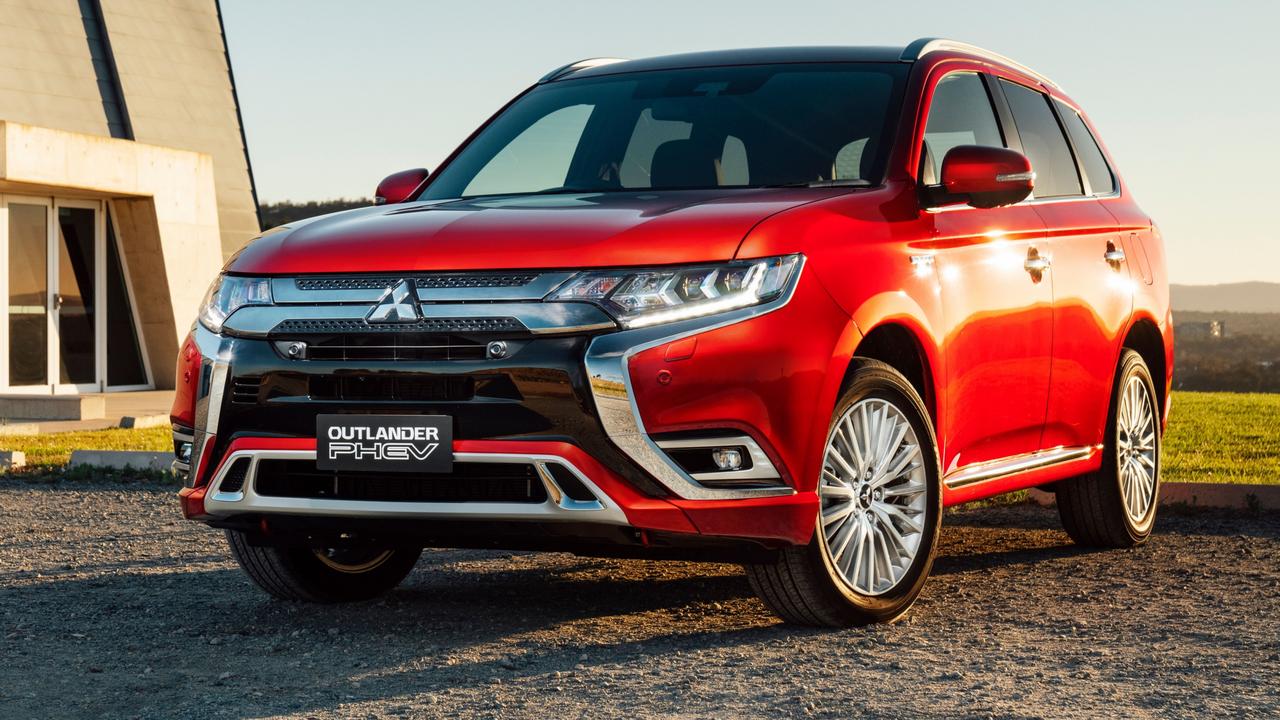Tested: New Toyota RAV4 sets family SUV benchmark
The Japanese brand’s new SUV is one of the most popular SUVs in Australia, but one vital addition is sure to make the family car even more successful.
Hybrid cars have a way of sneaking up on you. Quieter than regular vehicles, they are also increasingly likely to hide in plain sight.
No longer confined to quirky — some would say divisive — shapes such as the Toyota Prius, the technology is a core element of the Corolla, Camry and now the RAV4.
Toyota publicly says the goal is for petrol-electric sales of the medium-sized crossover to represent 40 per cent of its tally this year. But executives wouldn’t be surprised if the hybrid accounted for more than half of the model’s sales. Toyota sales and marketing boss Sean Hanley is bullish about hybrids.
“Our plan this year is to sell more than 25,000 hybrid vehicles,” he says.
It’s a far cry from the launch of the pioneering Prius in 2001.
“Our goal at that time was to sell just five cars a month. I don’t even like to admit this, we didn’t achieve that sales figure at that time.”
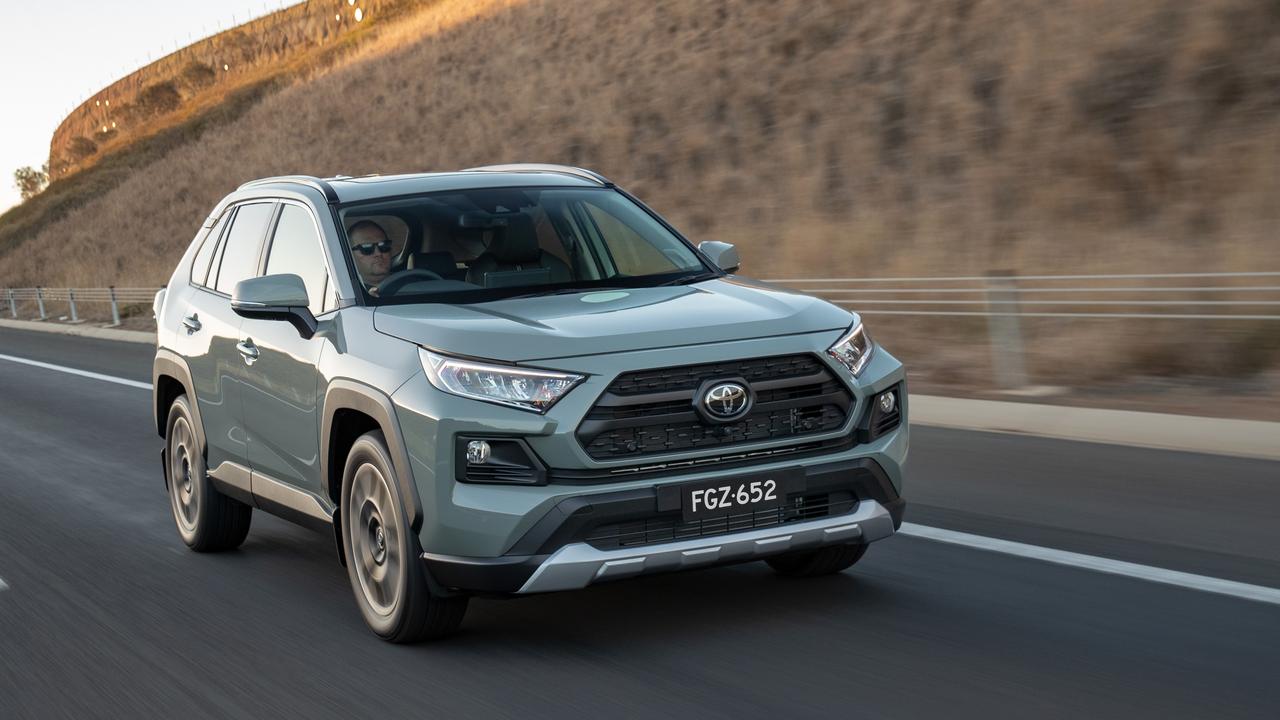
The company recently tipped over 100,000 hybrid sales in Australia.
No longer the genre for green-minded conservationists, hybrids represent the most powerful and efficient examples in the RAV4 line-up.
Six of the 11 versions in the new range are electrified, at a $2500 premium over the standard petrol engine.
Priced from $30,640 plus on-road costs in manual form or $2000 more with a continuously variable transmission, the basic RAV4 is powered by a 2.0-litre four-cylinder engine (127kW/203Nm).
Hybrid versions pair a 2.5-litre engine with an electric motor for a combined 160kW as a front-driver or 163kW in all-wheel drive, with an additional electric motor on the rear axle.
The cheapest hybrid costs $35,140 and you can budget an extra $3000 for AWD.
Impressive standard safety kit includes autonomous emergency braking, active cruise control and lane keeping assistance.
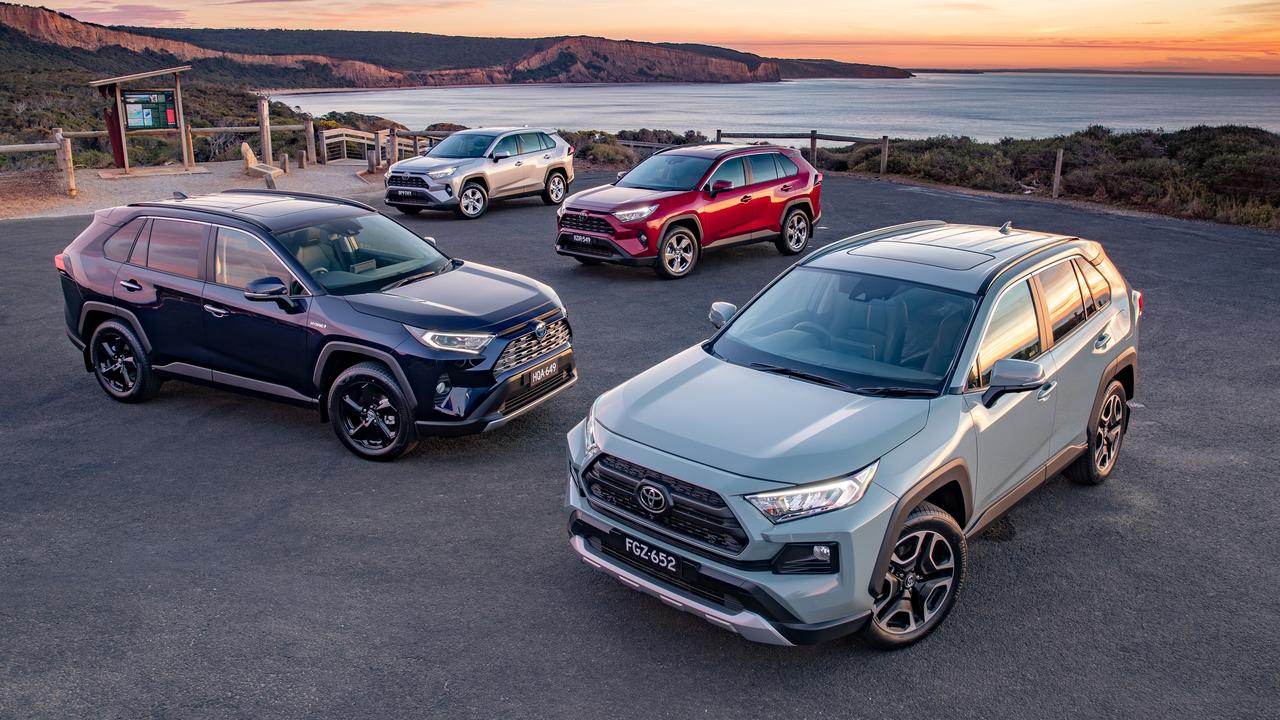
The eight-inch touchscreen in every version has satnav, reversing camera and Bluetooth — but not Apple CarPlay or Android Auto. Smartphone mirroring is part of a free update due before Christmas.
If you have cash to spend, there are such niceties as heated leather seats with memory adjustment, sunroof, thumping JBL audio, digital dash and power tailgate.
Topping the range is the $44,640 RAV4 Edge with 152kW petrol motor, eight-speed auto transmission, off-road driving modes, 19-inch alloys and tough-looking bumpers that separate it from the herd.
Toyota reckons most punters will plump for the mid-range front-drive GXL Hybrid, with five USB ports in the cabin, dual-zone climate control, front and rear air vents, smart keys, wireless phone charging and more.
It’s a practical space with plenty of storage options and a sizeable 580L of cargo capacity, made possible by a variable-height boot floor.
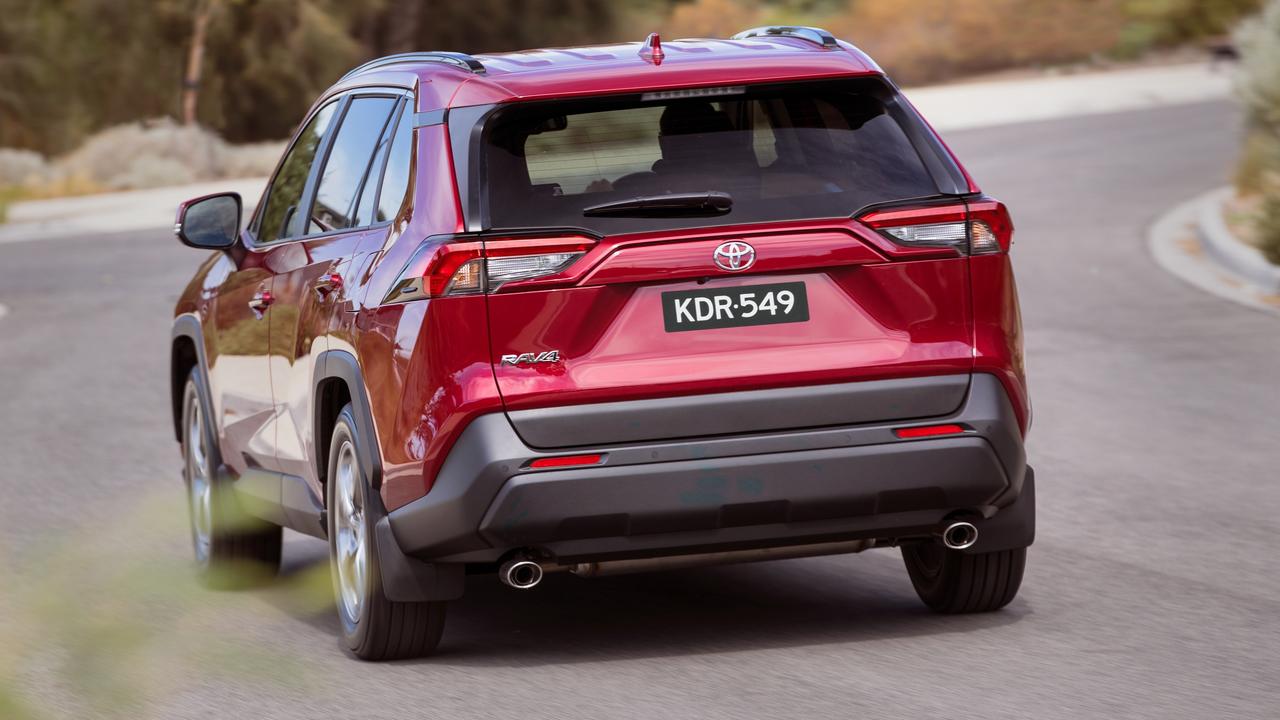
There’s plenty of leg and headroom in the back, though the front seats are perched a little high for some occupants — truly tall types will find their hair rubbing the roof.
Clear driver instruments with a digital speedo are impressive, more so than the tricky central infotainment set-up. It requires the driver to stretch to reach it and isn’t as intuitive as the best-in-class.
The good news for customers is that the RAV4 is great to drive. It steers sweetly, following driver input with a minimum of fuss.
Wider than before, the new RAV4 has a lower centre of gravity, contributing to a sportier driving experience. It elicits remarkable grip from its Bridgestone tyres, elevating its dynamics from among the bottom of its category to a place toward the top of the class.
The ride is impressively supple, helping the car retain its composure on broken surfaces.
Hybrid front-drivers bring all the grunt you need, easily outgunning most similarly priced rivals with impressive straight-line pace.
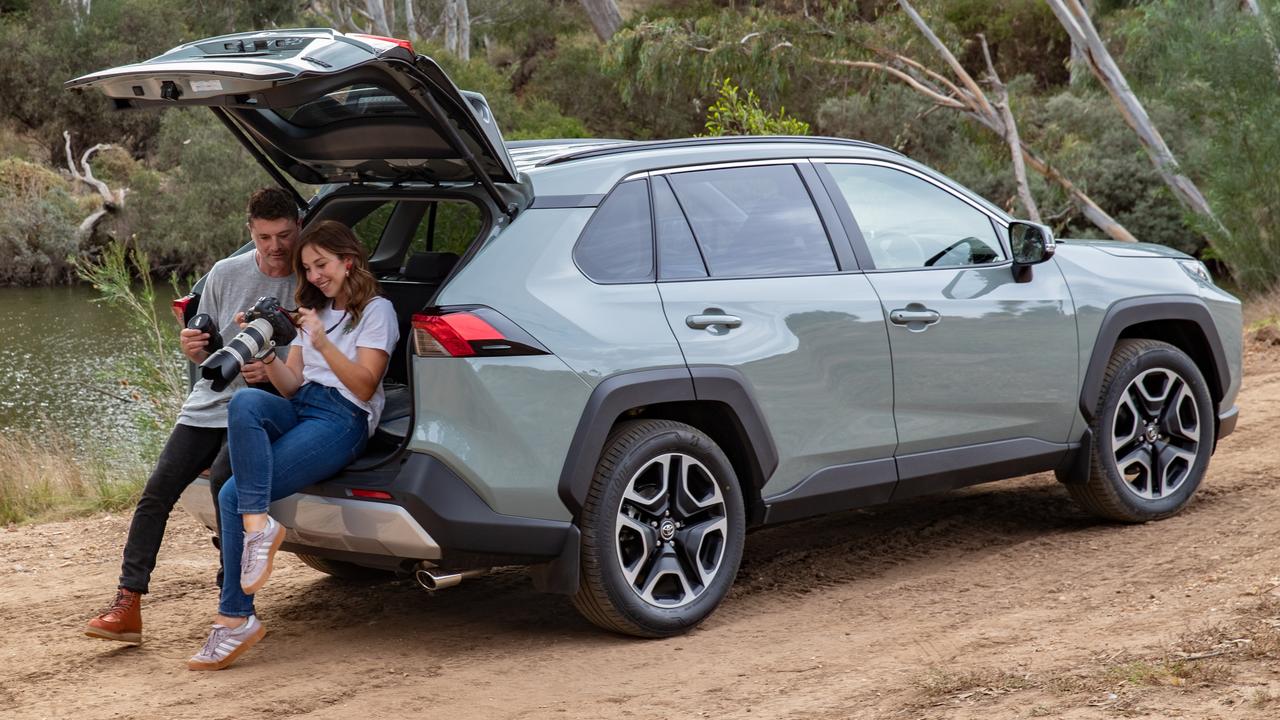
All-wheel drive hybrid versions are particularly impressive, balancing traction between the front and rear by sending up to 80 per cent of available torque to the electric motor on the back axle in slippery conditions.
Chief engineer Yoshikazu Saeki reckons the petrol RAV4 Edge is the driver’s pick. That’s because of its clever rear differential with torque vectoring — the car can push power from front to rear and left to right, sending grunt to the wheels with the most grip.
The Edge’s eight-speed automatic transmission gives drivers more direct control of the engine than continuously variable jobs elsewhere, though its lack of paddleshifters might frustrate those with sporting intent.

It shone in wet conditions and worked well during a light off-roading excursion that proved the car has enough chops to go off the beaten track occasionally. Damaged bodywork on one example suggests proper four-wheel drive enthusiasts will be better served by something more focused.
Trainspotters will note that Toyota scored a sneaky win over key rival Ford with the range-topping RAV4. The Blue Oval’s mid-size Endura SUV is called the Edge overseas but is obliged to wear another name — Toyota holds trademark rights to the sharper moniker.
Most of our RAV4 time was in the AWD hybrid, with 131kW/221Nm petrol engine, 88kW front electric motor and 40kW rear motor. Claimed fuel efficiency of 4.8L/100km feels achievable in the real world, as our test returned mid-fives running up and down the Adelaide Hills.
Brisk in the back country, the hybrid Toyota’s true advantage comes in stop-start traffic where it can operate on pure electric power for short distances. Smooth and silent, the hybrids have none of the spaceship sound effects and jerky brake regeneration served up by early examples of the breed.
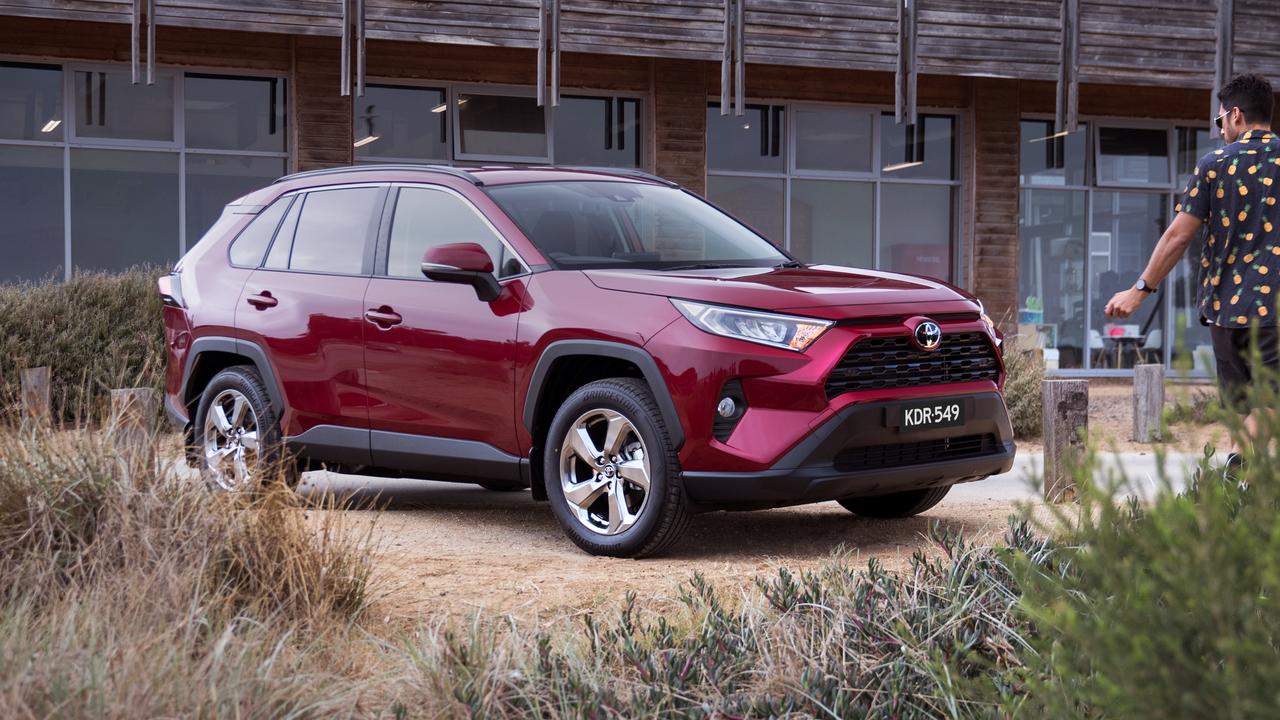
Verdict 4/5
Impressive on the road, loaded with safety gear and more spacious than most rivals, the new Toyota RAV4 represents a significant improvement, helped by hybrid frugality.
What’s new
Price: Starts from $30,640 plus on-roads (or about $34,500) — that’s $1190 more than the outgoing model and middle-of-the-road for this class. Minimum price for AWD is $38,140 plus on-roads, the hybrid coming at a $3650 premium to the previous AWD entry point. It’s also $2000-odd more than the equivalent AWD Honda CR-V, Mazda CX-5 or Hyundai Tucson.
Tech: Safety features include autonomous emergency braking, active cruise control and lane keeping assistance. Mid and high grades get wireless phone charging but buyers need to wait until the end of the year before Apple CarPlay/Android Auto arrive as a no-cost retrofit.
Performance: Diesel is no longer available but hybrid tech pinched from the Camry enhances efficiency with up to 163kW of power. The previous model’s paltry 107kW/187Nm base engine has been boosted to 127kW/203Nm. Range-topping Edge gets new eight-speed auto.
Driving: Riding on a new platform shared with the Corolla and Camry, the RAV4 is significantly better to drive than its predecessor — it’s more responsive on the road and compliant over bumps.
Design: Crisp new styling is helped by revised proportions with a wider footprint, longer wheelbase and shorter overhangs. Enormous boot is an advantage compared to best-selling Mazda CX-5.
Toyota RAV4 vitals
Price: $30,640 to $44,640 plus on-road costs
Warranty: 5 years/unlimited km, $1050 for 5 years
Engine: 2.0-litre 4-cyl, 127kW/203Nm; 2.5-litre 4-cyl (152kW/243Nm); 2.5-litre 4-cyl hybrid (160kW or 163kW)
Safety: Not yet rated, 7 airbags, AEB, active cruise control, lane keeping assistance, speed sign detection.
Thirst: 6.5L-7.3L/100km (hybrid 4.7L-4.8L)
Spare: Space-saver (not ideal)
Boot: 580L (very good)


